


"The Blue Berets"



History Page
"The Mission Comes First"
 The Blue
Beret Motto
The Blue
Beret Motto

"The mission comes first!"
 The Blue
Beret Creed
The Blue
Beret Creed

"We shall not lie, cheat, steal
nor tolerate those who do."
 Our
Story
Blue Beret History
Our
Story
Blue Beret History
By SSgt Chris Yaroch, CAP
INTRODUCTION
To date, the U.S. Air Force has its elite beret wearing units. They consist of
Pararescue (maroon), Combat Control (scarlet), Combat Weather Jumpers (gray),
Tactical Air Control Parties (black) and Security Forces (dark blue). All play
an integral part in the overall Air Force mission. Civil Air Patrol, much like
its parent service, also has special units that contribute to the overall effort
of our missions. At present, National Blue Beret is the only C.A.P. unit that
exists that wears and is authorized to wear a beret. This is their story...
IN THE BEGINNING-1960's
It was a time of Woodstock, hippies, free love and the Vietnam War. During the
winter of 1966-67, Col Allen Towne/Iowa Wing Commander requested that an
intensive training program be set up in Iowa Wing to train senior members and
cadets to become effective and knowledgeable in ground search & rescue
operations. Under the command of Lt Col William B. Cass/Iowa Wing deputy
Commander, a program was established for the spring of 1967. The purpose in mind
was to create among the members of Iowa Wing; the ability to function
effectively in almost any capacity when called upon.
The first training session was held in April 1967 and consisted of four training
weekends. The curriculum consisted of standard first aid and personal survival.
The basic uniform was the OD green fatigues, combat or jump boots, blue ascot,
web belt and canteen. On the second weekend of the program, encampment members
were called upon to help control flooding along the Mississippi River. Cadets
and Senior members worked long hours filling sandbags and patrolling the dikes
during the worst part of the flood. Training on the fourth weekend covered many
subjects. Special emphasis was given to Civil Defense & C.A.P. cooperation,
crowd control, drill & ceremony, traffic direction, survival, first aid, and
communications. During that weekend, cadets were called upon to render first aid
to victims of a serious automobile accident. During the program, one weekend was
spent on Towhead Island, in the middle of the Mississippi River. The stay on the
island was used to develop Espirit' De Corp and to encourage communication
between Senior members and cadets. This training provided better-qualified
personnel for search & rescue and created a high morale among the members.
Soon after, the concept of the "Blue Beret" program spread to members
of other wings, who asked if they could participate. Planning was initiated to
invite other wings within North Central region to attend the next Iowa Wing Blue
Beret encampment. Excitement and enthusiasm spread throughout the Region.
The idea of a program of this type mushroomed. Members demanded more training.
Those who did not participate in the first session became interested and
demanded another like it. As a result, a second session was held in late August
to early September 1967. The four weekends were alternated over an eight-week
period. The first two training weekends were held at Ledges State Park, where
instruction was given on first aid. The third training weekend, held at Camp
Dodge, included traffic direction; crowd control, basic wilderness survival, and
search & rescue techniques. The final weekend consisted of a SARCAP that
allowed members to practice what was taught the previous weeks. Ninety members
completed the course.
The third Blue Beret encampment was held in the fall of 1968. It, too, was held
on alternating weekends over an eight-week period. Eighty members attended this
session. It is noted that many cadets from previous sessions returned for
additional training.
In June of 1969, eighty-six members from five wings within North Central Region
convened near Dubuque, IA. for the first region-wide Blue Beret encampment. This
was a one-week, non-interrupted training session. It began with a hike from
Dubuque to Bellevue that included a one-night layover at Massey Station. The
week's training encompassed wilderness survival, civil defense operations, first
aid, search & rescue techniques, communications, leadership, drill &
ceremony, and flight-line training. At the conclusion of the third session, blue
berets were given to those who satisfactorily completed the course. From this
emerged the title "Iowa Wing Blue Berets" .The first Blue Beret
reunion was held at Ledges State Park in October of 1969. It was by open
invitation to anyone within the Region. During the reunion, Chaplain Aydt
presented a design for a patch. The design depicted an eight-ball with a blue
beret perched on top. The design represented the seven wings and Region
headquarters within North Central Region. As well, the idea that the Blue Berets
were "behind the 8-ball" whenever called out for a mission. Thus the
8-ball was born.
The planning committee met several times to plan for the next encampment. During the meetings, the committee decided that Blue Beret should have a more professional name. After serious deliberation, The activity officially became known as the North Central Region Special Service Corps. with the nickname remaining the Blue Berets. Upon this news, the letters "NCRSSC" were added to the beret on the 8-ball.
EXPANSION-1970's
The age of polyester, disco, roller derby's and the CB-Trucker counter-culture.
Many Point Scout Reservation, MN. was the scene of the 1970 NCRSSC encampment.
During the two weeks in that early June, training was expanded to include land
navigation, physical activity and leadership skills. Two hundred + cadets and
twenty-five Senior members from six wings within the North Central Region and
the Virginia Wing attended the encampment. The following June of 1971, the
NCRSSC held a two week encampment at Lake of the Ozarks, Mo. This particular
year saw the addition of training in helicopter rescue techniques. For the first
time, a separate flight was established for those who had previously earned
their berets. Advanced training was given to cadets. This flight was the
forerunner of the Blue Beret II program in 1985. As the 1970's progressed, the
encampments got larger and Blue Beret's popularity grew bigger.
THE HIGH WATER MARK-1980's

Break dancing was created, heavy-metal rockers looked suspiciously like girls,
Pac Man was the rave and Ronald Reagan was president. 1981 was the foreshadow of
changes to come in Blue Beret. For starters, the encampment held at Fort McCoy,
near Sparta, WI. For the very first time. Also, the training shifted from ground
search & rescue to general emergency services. The move to Fort McCoy
started a 2-phase system of training. Phase I, conducted at Fort McCoy, entailed
classroom learning and demonstrations. Phase II, conducted at the EAA Airshow in
Oshkosh, was provide candidates a chance for practical application of what they
learned. Training and experience... a good deal all the way around. The
environment of a military installation was used to bolster the Phase I training
hence the move to Fort McCoy. The move also saw the addition of command &
control and convoy movement to the training
curriculum. Duties performed at the EAA Airshow included aircraft command &
control and aircraft movement. Encampment personnel were divided into separate
teams (i.e. aircraft parking, tailing, flightline, etc.). Cadets pulled KP &
CQ duty in camp, performed field maneuvers, acted as security & maintained
crowd control, and participated in REDCAP missions. REDCAP missions entailed
checking the airfield for aircraft that did not closeout their flight plan,
aircraft reported as missing, and activated Emergency Locating Transmitters.
Over the course of the encampment, cadets and Senior members parked 10,000
aircraft and participated in 10 REDCAP missions. Sixty cadets and four Senior
members successfully completed training that year.
1982 saw our first international visitor. A British air cadet, sponsored by Col
Cass, joined the encampment as a guest. Tragedy struck when Lt Col John
Peterson/Blue Beret Deputy Commander, died during his trip home from the
encampment. Blue Berets were deeply affected by the loss.
1983 brought another first. Ten cadets and two senior escorts from the air cadet
corps. of Canada traveled down to participate in our encampment. Also, Col
Dennis Kumm assumed the duties as Blue Beret Deputy Commander.
1984 & 1985 - Blue Beret moved from Fort McCoy to Volk Field ANGB. The move
was used to promote a more Air Force oriented environment to the Phase I portion
of the encampment. The training received at Volk Field remained the same as
years before. At the EAA Airshow, Blue Beret manned a rescue boat out on Lake
Winnebago dubbed "SEACAP". Also, five cadets and two Senior escorts of
the British air cadets participated in the encampment for the very first time.
Blue Beret was definitely making great strides. Col Cass, founder of Blue
Beret, was selected as National Commander and promoted to Brig. General. At the
end of the National Board meeting in Atlanta, Ga. Col Kumm was named successor
to BGen Cass as Blue Beret Commander.
Due to the immense popularity gained over the years, Blue Beret became a
national special activity. From that point on, it became the Civil Air Patrol
Special Service Corps. The encampment saw an attendance of two hundred + cadets
and thirty-five Senior members. During the course of the encampment, Blue Beret
was tasked with guarding the British Airways Concorde and credited with saving
the lives of two people severely injured by a run-a-way plane while in their
tent. Another advanced training program was started under the direction of Capt
John Shump. The program was called Blue Beret II. The training conducted
involved advanced courses in leadership; emergency services, wilderness
survival, and served as a training aid for staff members wishing to become cadre
for the Beret program. This was the first year that Blue Beret itself went
abroad. Hosted by the Kent Wing/Royal Training Corps. ten cadets and three
Senior members traveled to Kent, England. While there, they participated in
sightseeing, glider flying and learned about the British air cadets & way of
life. It was a banner year for Blue Beret in 1986. It also signaled the
beginning of the end. The encampment saw its largest attendance on record, 300 +
cadets. Blue Beret was apart of the National Emergency Assistance Program
(N.E.A.T.) along with the Pennsylvania Rangers and Washington Challengers. Blue
Beret the hardest program going in C.A.P., even harder than Pararescue
Orientation Course. There were multiple ranger-type programs operating during
this period. Blue Beret also garner several accolades. They parked over 20,000
aircraft the opening weekend of EAA '86. There was, at the time, considered the
largest Airshow in the world. Berets once again came to the rescue. Beret II
cadets were credited with saving a woman who had her arm amputated by a spinning
prop. SEACAP was credited with four saves when they fished out the survivors of
a downed aircraft in Lake Winnebago. Unfortunately, this year was the last run
of the Blue Beret II program. Behind the scenes, trouble was starting to brew.
From previous years, complaints and animosities were about to come to a head.
Most of this was generated by bad politics, "junior Rambos" running
rampant, and steadily developing myths being regarded as fact. The winds of
change had come...
1987 saw Blue Beret spending the duration of the two week encampment at Oshkosh.
Blue Beret discontinued conducting Phase I at Volk Field, citing problems in
securing support & training facilities from the Air Force and the hellish
logistics of convoying an entire encampment across the greater width of
Wisconsin. National Headquarters started taking a more active role in the
going-ons of the encampment. Lt Col Blascovich/North East Region appeared on the
scene as an advisor and go-between for National Headquarters. The systematic
dismantling of Beret had begun. The first to go was the uniforms were worn. The
Beret cadre was no longer allowed to wear their Beret dress blues or jungle
fatigues. SEACAP was credited with saving five more people from Lake Winnebago
that year. The cadet commander, Cadet Adam Corrado/NY. Wing, was presented with
his Spaatz Award by Dick Rutan and Gina Yeager.
Blue Beret took possession of its new buildings on their permanent and present
compound in Oshkosh in 1988. An end to an era was starting to draw to a close.
The program was no longer in the green army tents as the years before. SEACAP
operations were terminated and turned over to the Coast Guard Auxiliary. At
present, the boat sits in a salvage yard in Beaver Dam, WI. Beret cadre were
ordered to remove their St. Alban crosses from there berets and were ordered not
to speak of any of the Beret traditions and values to the candidates. The cadre
could no longer impose push-ups on the cadets because National Headquarters
viewed it as a form of "hazing".
But no one could ever take away the
pride we all felt in our hearts, "Once a Beret, Always a Beret".
The death rattle of the Blue Berets was finally heard in 1989. The powers-to-be
had finally succeeded in dismantling the 22 year old program. All identifiable
traces of the program were wiped out and the cadet and Senior staff's morale was
at an all time low. The Berets could no longer impose maintain & enforce
discipline over its candidates and control of the encampment rested solely in
the hands of National headquarters. Blue Beret had started as a search &
rescue and survival course, and was dwindled to a flightline training course. It
was the opinion of many a Beret the program was done for good.
NEW BEGINNINGS- 1990's
Grudge is normal, America is fighting the war on drugs, and everyone is trying
to read George Bush's lips. A proxy form of the program carried on from 1990 to
1995 as the "Civil Air Patrol EAA Oshkosh" (CEO) Activity. Cadets wore
the blue jumpsuit and baseball cap. They were given and opportunity to
"park planes, see the Airshow, and have fun". Not so surprisingly, the
cadet attendance rates plummeted.
In 1996, There was a surge of interest in bringing back the Blue Beret program.
To add fuel to the fire, the EAA was pressuring the C.A.P. to bring back
"them Blue Berets". EAA was extremely unhappy with the CAP's
performance after the termination of Blue Beret. The quality of service was
mediocre at best and couldn't produce the number of bodies needed to support the
EAA. The program was reinstated as a national special activity and given its new
and current name, National Blue Beret. The Air Force ran the program until the
end of the 1998 activity. It is reported that C.A.P. will assume control again
in 1999. However, there was a lingering disenchantment that the Berets felt they
were given their berets and not earned them.
As of this writing, due to an overwhelming response from new Berets and old
alike, the activity is starting to flourish. There is a renewed interest in the
return of the old traditions and values. There have been observed changes for
the better at the 1998 activity and the signs are encouraging. At present,
efforts are afoot in working to restore Blue Beret back to a search & rescue
and survival school.
"THE MISSION COMES FIRST!"
These were the original nine blue berets from Minnesota Wing. This was the Minnesota group of the graduating class of the first multi wing blue beret encampment in Belview Iowa in 1969. Prior to that it was Iowa wing only. Rocky Bliss
Front Row: Greg Schofield; Ron Deike; Charles (Chuck) Brown; George Vollmer; & Joe Simertz
The Back row: Rodney Lindberg (his father helped raised the first flag over Iwo Jima); Me: R. Nathan (Rocky) Bliss; Jim Walz; Andy (Ace) Lindberg
 The Blue
Beret Emblem
The Blue
Beret Emblem 
At present, the "8 ball" patch is used to denoted participation in the Blue Beret Activity. This was not always the case. The 8-ball was originally the Blue Beret mascot.
It was designed when the program was the Iowa Wing Special Service Corps. Chaplain Aydt presented it at the 1969 Blue Beret Reunion, after a patch design was requested. The 8-ball with the beret was created to represent the 7 wings in the North Central Region and Region HQ, Also that the Blue Berets were always "behind the 8-ball" at search & rescue missions.
The 8-ball mascot was used for several years and then fell into hiatus. In 1987, Capt. Ken Gleich (MO. Wing) resurrected the 8-ball as the Blue Beret emblem.
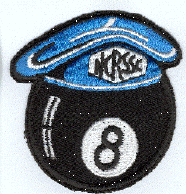
The original patch


Here's a quick brief on the beret flashes Blue Beret has worn. A beret
flash is a patch that is worn on the beret, parallel to the bottom edge of the
beret and centered over the left eye. Normally a beret crest or rank insignia is
worn in the center. The U.S. Army Special Forces (Green Berets) was the first
American military force to wear the beret. The Special Forces created the beret
flash to denote what Special Forces Group you were assigned to (i.e. 1st, 3rd,
5th, etc.). Blue Beret used flashes to denote training received or tenure in the
program. The flashes are listed as follows:
Senior Staff: The original flash was light gray in color with a dark blue inner
border. In 1985, this design was scrapped for a red flash with a red-white-blue
stripe the ran at a 45 degree angle starting at the top left. This flash was
awarded to senior member Berets that attended 2 or more encampments as staff.
Beret II: The flash for senior staff was red with a blue border. This was
awarded to senior member Berets that graduated from Beret II or served a Beret
II command element. Only 3 have been awarded to date. The flash for cadet
graduates of Beret II was red with a blue stripe that ran down at a 45 degree
angle starting at the top left. Only a small number of these were awarded and
all are extremely rare.
Proposed: In 1987, National Headquarters changed the regulation on berets. Prior
to this, there were literally scads of programs in CAP that issued berets for a
myriad of reasons. Headquarters proposed that only the "Big 3"
involved in the National Emergency Assistance Program (Blue Beret, PA. Rangers,
Washington Challengers) could wear berets. The regulation stated that all three
would wear the dark blue beret. The graduates would be identified by colored
flashes respective of their programs. Blue for Blue Beret, Red for PA. Rangers
and orange for Challengers. The reason behind this was prior to the regulation
change, Headquarters authorized the wearing of the blue
beret for Blue Beret, red beret for PA. Rangers and orange beret for WA.
Challengers. In reality, PA Rangers do not and never did award berets for Hawk
Mountain and Challengers wore blue berets. In 1997, A new beret flash was
proposed for Blue Beret. It was a blue circle with a black border. This would be
worn to denote graduation from Blue Beret and the crest awarded to the honor
graduates of the activity.
Formerly, the protocol for wear of the flash consisted of senior members wearing
the full-sized rank on the flash and the crest off to the viewer's right. Cadets
wore the crest on the flash and miniature rank off to the viewer's right.
Currently, Only the crest is worn on the Beret with no flash.
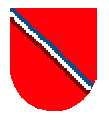
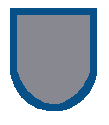
Blue Beret Senior Staff Flashes
(L) 1985-1989 --- (R) Prior to '85-Original
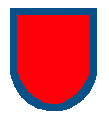
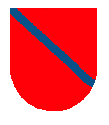
Blue Beret II Flashes
(L) Senior --- (R) Cadet

 Sometime around 1984-85, the Blue Beret II
Program was established. This program was designed to give returning Berets more
options in training. Prior to this concept, Cadet cadre could either work as
staff (i.e. flight commander, first sergeant, etc.) or advance team which set up
the phase II camp at Oshkosh.
Sometime around 1984-85, the Blue Beret II
Program was established. This program was designed to give returning Berets more
options in training. Prior to this concept, Cadet cadre could either work as
staff (i.e. flight commander, first sergeant, etc.) or advance team which set up
the phase II camp at Oshkosh.
Beret II was a program that offered strictly advanced ground search and rescue techniques. The course of instruction included advanced wilderness survival, rappelling & rope work, advanced ELT search & DF work, ground search with aircraft support, and basic instructor training.
The original staff for Beret II consisted of Maj John Shump, Commander, 1LT Greg Bachar, and 1Lt Mitch Berry, Executive Officer. The Beret II's were rarely ever seen in camp due to the nature of their training. Another interesting aspect to the Beret II program was that they did not do any support work for the EAA Fly-In. Beret II was a more physically demanding course than Blue Beret. Beret II ran from 1984-1986. A Beret II graduate could be identified by his beret flash (see flash section).

 During the Blue Beret encampments prior to the
activity's closure in 1989, there were several uniforms worn during Beret's
tenure at Volk Field and EAA Oshkosh, Wisconsin. These uniforms are as follows:
During the Blue Beret encampments prior to the
activity's closure in 1989, there were several uniforms worn during Beret's
tenure at Volk Field and EAA Oshkosh, Wisconsin. These uniforms are as follows:
-Fatigue Uniform: The standard CAP field uniform before the Battle Dress Uniform (BDU's) was the OD green fatigues. Beret cadre wore the beret and an ultramarine blue ascot and spit-shined combat or jump boots with the green fatigues while performing staff duties during the encampment. This was a common site around the camp.
-Tropical Utilities: This particular uniform was most popular with the Blue Berets. The OD tropical fatigue uniform, or better known as the "jungle fatigues", gained popularity because of their predominant use in Vietnam. Mostly there versatility and the fact that they were lighter, cooler and had more pockets than regular fatigues. Most of all, they were "different".
-Dress Uniform: The dress was the standard CAP class "B" (summer short sleeve blues) worn with the beret, ribbons, an ultramarine blue ascot, blue shoulder cord with one silver tip, chrome whistle with chain, and spit-shined combat or jump boots with the trousers bloused. This uniform was only worn at the Blue Beret Activity.
CAP-EAA Oshkosh (CEO)
A great looking Patch, Not a very popular Program.
This is Not an Official WebSite & does not reflect the views or opinions of the U.S. Air Force, Civil Air Patrol or the National Blue Beret Program.
LINKS OR REFERENCES TO INDIVIDUALS OR COMPANIES DOES NOT CONSTITUTE AN ENDORSEMENT OF ANY INFORMATION, PRODUCT OR SERVICE YOU MAY RECEIVE FROM SUCH SOURCES. PER CAPR 110-1.
If you have pictures, information, or graphics to add to this page, please e-mail them to me. Thanks, Lt Col Ted Lohr, Webmaster
e-mail:
B.B.A.T.W.
|
Please note:
|
Copyright firearsn © 1997-2013.
Last revised:
21 November 2012.